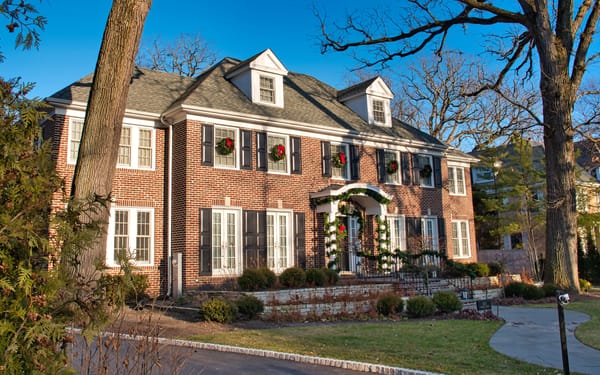Rental Property Depreciation Calculator: How to Claim Depreciation for Rental Properties

There are various tax-deductible expenses that can make renting out a property in the United States more attractive. One of which is rental property depreciation.
As there’s no receipt, it’s easy for rental property owners to forget about this expense. However, as it’s spread out over several years, it’s a worthwhile expense to bring into the calculation.
Whether you’ve forgotten about this “hidden” expense that you may legally deduct or working it out sounds too daunting, after reading this quick guide you’ll be able to maximize this tax benefit confidently.

What Is Rental Property Depreciation?
Similarly to other fixed assets, a rental property also has wear-and-tear costs. The internal revenue service (IRS) lets rental businesses deduct this depreciation cost over the duration of the property’s lifetime.
A residential rental property typically uses the straight-line depreciation method which means that the property will be depreciated over a span of 27.5 years. This means that those that qualify can deduct a percentage of their rental property’s initial cost each year for nearly three decades.
To avoid confusion, it’s important to note that this is how the IRS views rental property depreciation. In real life, the opposite usually happens. The property value tends to increase in value from a housing market’s perspective, one of the reasons why real estate remains such a popular investment.
What Are the Benefits of Rental Property Depreciation?
The main advantage of rental property depreciation is that it lets you reduce your taxable income. In terms of numbers, this works out to a depreciation percentage of about 3.636% per year, on average. It might be seemingly small, but it adds up over the years.
Sure, calculating depreciation is a time-consuming activity, especially if you’re unfamiliar with accounting. However, it can lower your overall tax liability quite significantly. As a matter of fact, in some instances, you might find that you have no tax obligations whatsoever.
How Do You Work Out Rental Property Depreciation?
The following advice is by no means a replacement for a tax advisor or an accountant. In addition to ensuring that your recordkeeping is up to date and accurate, it’s also strongly recommended that you enlist the services of an accounting professional familiar with the real estate industry specifically.
-
Work out the cost basis
The first step is to work out the original cost (the asset’s initial cost). You’ll use the purchase price of the home, excluding the value of the land to work out this number. To calculate the land value, you can use the fair market value at the time of buying the property.
Let’s say your property’s purchase price was $300,000. The land was worth $40,000. This means that the cost basis that you may use for depreciation purposes will be $260,000.
You’re also allowed to add certain fees to the property purchase price. These fees include any closing costs incurred like:
- Survey fees
- Insurance costs
- Transfer taxes
- Attorney costs and other legal fees relating to the home purchase
- Title search costs
- Real estate commissions
- Settlement fees
In addition to these costs, you may also add any costs that went towards home improvements while you were the owner. Examples of capital improvements include:
- Upgrading the roof
- Building an extra garage
- Renovating the kitchen
- Adding another bathroom
These capital improvement expenses shouldn’t be confused with standard maintenance or repair costs, though. Expenses such as painting the property can’t be added to your cost basis but may be included as a tax-deductible expense for the financial year in which the expense occurred. In other words, you’ll benefit from the deduction once in the same year.
-
Divide it by the useful life
Once you’ve figured out the cost basis, the rest is pretty straightforward when you use the straight-line depreciation method. You’ll now divide the basis by the number of useful years which is 27.5 years.
However, keep in mind that there are other methods that can be used to calculate depreciation. As such, it’s best to consult with a tax specialist who’ll be able to advise you if an alternative depreciation system should be used. It can be an intricate process and best completed with the help of a qualified tax professional.
3 Key Factors About Real Estate Depreciation to Keep in Mind
-
Residential use
This tax benefit is only available to properties being used for business purposes, like rental properties. To put it differently, it’s only available to real estate assets that generate an income.
Where a property is mainly used as a primary residence, rental property depreciation can’t be claimed. However, if you combine business with pleasure and rent out your property for a duration of the year, you’ll need to rent out your property at least for 15 days during the financial year to qualify for this property tax benefit.
You’ll also need to make sure that your business name (if you operate as an LLC) or your name appears on the deed as the property owner.
-
The date of purchase
While it’s usually mostly simple to work out the sum, there are a few factors to keep in mind that may make it more challenging.
If you, for example, bought the property in the middle of the year, you’ll need to take into account only the months that you have owned the property in the first year. In other words, your depreciation cost for the first year will commence only once you have started renting out the property. This means that the amount for the first year will be lower as you won’t be able to use the whole year.
The same applies to if you’ve sold the property midyear. In this case, you’ll also only have to take into account the months during which you were still the property owner during the last year. You’ll also need to consider depreciation recapture (more about this next).
-
Depreciation recapture
If you decide to sell your property for which you’ve claimed depreciation, you’ll need to keep depreciation recapture in mind. In short, the IRS requires that a real estate investor also pays property taxes after a sale for the depreciation expenses. This could affect your overall profits, giving you one more reason to work with a tax pro before you put your rental property on the market again.
Reporting your Rental Property Depreciation in the US
Come tax time, you’ll use Schedule E of Form 1040 to report any rental property depreciation. In some instances, you might need to use additional forms. For instance, if it was the first year of operation, you’ll need to use Form 4562.

Depreciate Your Property; Appreciate Your Time
It doesn’t happen a lot that the IRS gives tax benefits to real estate investors. It’s also rare that an asset losing value can work in your favor, giving you one more reason to ensure that your bookkeeping is meticulous.
To leverage these two benefits, though, you’ll need to ensure that you’re completely familiar with all the specific depreciation regulations. Combine this with the time needed to keep track of your income-producing activity and rental property expenses and it quickly becomes a time-consuming task.
Aside from a rental property depreciation calculator, there are various other tools available on the market to help you work smarter with your limited time. One such tool is iGMS, a popular vacation rental software.
It’s created to streamline your operations, help you with recordkeeping, and save you time. Here are just a few of the key tasks that you can delegate to iGMS:
- Managing multiple accounts and listings on the major vacation rental platforms
- Organizing your messages and email into a single feed and using automated templates and triggered messaging to improve guest communication
- Automating the process of guest reviews
- Managing direct bookings using a direct booking management toolkit
- Receiving payouts and creating invoices by connecting your Stripe account to iGMS
- Creating your own website in minutes
- Sharing daily schedules with your team and auto-assigning tasks.







